
Reading my reports here and there, probably mostly on Facebook, you may have heard the stories about me, so I’ll fill in quickly. I only had a very slight headache, but on Sunday afternoon, I started pronouncing some things very oddly and by midday Monday, I was both talking and writing what would best be called nonsense. I went to the doctor Monday afternoon, where an MRI showed either a stroke or a tumor, so I was sent to the hospital, where a more detailed test showed a tumor above my left ear and brain swelling around it.
Fortunately, medication quickly treated the swelling and by the time I was sent home yesterday, I was mostly better and the recovery continued today. I’m taking medication to continue the shrinking and I’m getting back to work. I’ll be heading up to Johns Hopkins Hospital in March for detailed testing, to be followed by surgery to remove the tumor. A lot will depend on just what kind of tumor it is, but if I am lucky, I’ll soon be back to normal for good. I’ll keep you posted on the news as I learn.
Meanwhile, I managed to learn a surprising amount in a couple of days.
Personal Devices for the Hospital
Even with a swollen brain, I was bored to death in bed. Suburban Hospital in Bethesda, affiliated with Johns Hopkins, may be a wonderful hospital but it is not very comfortable and has a ghastly TV system. Until they let me out into a chair with a table a couple of hours before I went home, it was very hard to use my PC efficiently. My salvation was a phone and an iPad. I suppose my Android phone, currently a Moto G, would have done fine, but I had an iPhone 5s, and I spent more time than usual on the phone describing my situation to colleagues and friends. The iPad Air was the most critical equipment, much more so than say my Samsung Galaxy Tab would be. I used the iPad for email, Facebook, LinkedIn, the web, and finally, when I got clear of the work, Netflix. I have no idea why the hospital has such weird Wi-Fi, but it had lots of things blocked, including Facebook and part of email. This required me to keep switching between having Wi-Fi off and on when I needed something available. Fortunately LTE service on both my phone (AT&T) and my iPad (Verizon) were good.
Once I made it into a chair, I tried using my MacBook Air. Unfortunately, the Wi-Fi was a real pain in the neck because of blockage, so I just gave up and started either the iPhone or the iPad as a personal hotspot. I shouldn’t really have had to, but it turned out to be a big help.
I really do wish that a hospital provided Wi-Fi for patients. Those who are conscious and in need of something for either work or entertainment faced a terrible quality TV offering such wonderful choices as Fox TV News and HLN Network. Proper network availability is a big help for a variety of uses. Fortunately, at least Netflix did work through Wi-Fi, which could keep the cost under control.
Medical Devices
My sleep Tuesday night–having gotten nearly no sleep Monday–was desperately needed. But patient sleep seems to be low on the list. I was woken up every hour or two by a nurse who took my blood pressure and pulse-oximeter reading. The odd thing is that I had a blood pressure cuff attached to some sort of automatic reader, a pulse-oximeter connected to my finger, and a EKG device wired to chest sensors plugged into a radio unit stored in my gown pocket.
Unfortunately, no one seemed prepared to use this. The nurse woke me up once an hour or so, which made me more and more angry as the night went on. The nurse used a separate pulse-oximeter on my right hand while the cabled one on my left hand eventually came disconnected, leaving a couple of feet of cable attached. The EKG cables gradually came disconnected from my chest, leaving me with a useless but tangled-up collection of wires. It’s pretty difficult to tell what it was really supposed to do, but it mostly just left me uncomfortably snared in wires that did no good. And I managed to stop listening to the alarms beeping on the screen over my bed since the warnings seemed not really to mean anything important.
You would think that modern, remotely connected sensors could greatly simplify the systems that gave important information to the nurses responsible for supervising the patients while avoiding the constant wake ups. They do not seem to be quite ready for that.
(Then there’s the disgusting part you may want to skip. To urinate, a frequent problem because I had so much to drink, I was supposed to push a button to call the nurse who would show up to help me empty. Unfortunately, the nurse tended to take plenty of time at night and the bladder wasn’t so patient. It was nasty and there must have been a better way to deal with it, but we’ll skip the details.)
The Importance of Facebook
I have been a member of Facebook for many years, probably going back to its first non-campus dates, and I have to admit that I have never really cared for it very much. I am set up for my Tweets to get posted on my Facebook stream and I take a quick look every day. But I have never looked at it more than I have to.
My illness drastically changed my view of Facebook for the better. I guess I probably horrified some of my friends and acquaintances with my first postings yesterday before my brain was yet working correctly. Fortunately, it got better somewhat quickly as the day went on so that by the afternoon and this morning I could write intelligent reports. And I am deeply thankful to old friends, including Walt Mossberg of Re/code and Josh Weinberg of Digital Life Group, both dear old friends, for posting my condition.
Instead of ignoring Facebook the usual way, I found myself receiving wishes and greetings from dozens and dozens–maybe hundreds–of people who follow me on Facebook. They ranged from t0day’s friends to acquaintances I haven’t communicated with in years, maybe decades. The wishes from everyone, their thoughts and their offerings have dramatically helped me feel better quickly. My only regret is that I have not had time to answer every one who has sent me greetings because they all deserve responses.
But this also tells me a lot more about Facebook than I expected. I’m not quite sure who Facebook belongs to. Maybe today it is older participants than the younger members who created it, but it gives us important ways to communicate information directly. In the old days, some of your friends would probably hear about your health condition in a third-hand phone call, by which point the information had gotten thoroughly confused. Now you, or at least a close associate, can send the information one-to-one in a direct way. This never used to happen, and it is a big, big deal. Although I still run into plenty of silly stuff posted on Facebook, I now finally understand why it is really important in a way that changes our communications. And that truly matters. Maybe when Mark Zuckerberg was getting started at Harvard, he understood something that changed the world in an important way. I’d like to believe that.
—–
For those of you interested in a little report on my condition, my ability to communicate has improved massively as medication eliminated swelling of my brain. I think I’m now maybe 80% to 90% better–I still have occasional difficulty remembering a word, but I can read and type pretty much normally now–and I hope I’ll be back to 100% tomorrow. Because there seems to be no emergency need for surgery, the technique is to let everything proceed to shrink as much as possible before the testing and surgery. I hope it will be something I can recover from quickly and permanently, but there’s still a lot to learn. I’ll share the information with you when I know about it.
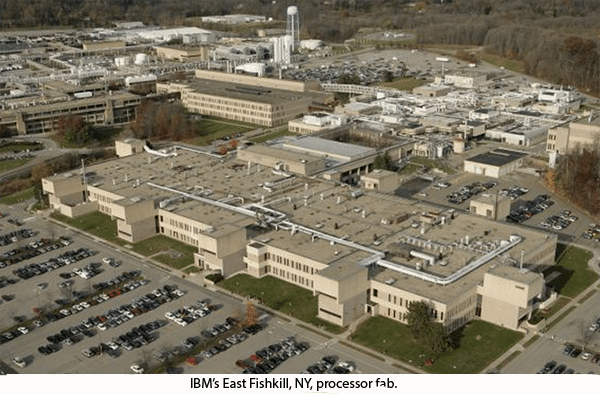

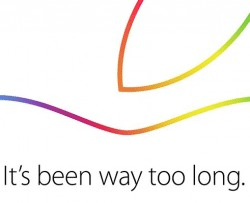
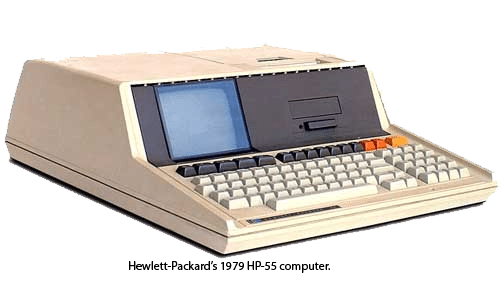


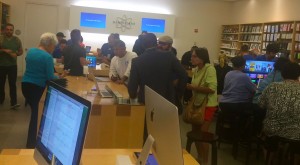
 I went to an appointment at the store with my wife, Susan, to have her iPad 2 repaired — it had stopped powering up. We had an appointment at the store and were surprised by how mobbed it was, with a line out front for purchasers of the iPhone 6 and 6 Plus. It was the first time I could recall walking into an Apple Store without being asked for my business as soon as I walked in. I ended up standing in line at the Genius Bar only to find out there was room only for iMacs (somewhat oddly, the store has more business with Macs than anything else) and I’d have to find someone else in the store.
I went to an appointment at the store with my wife, Susan, to have her iPad 2 repaired — it had stopped powering up. We had an appointment at the store and were surprised by how mobbed it was, with a line out front for purchasers of the iPhone 6 and 6 Plus. It was the first time I could recall walking into an Apple Store without being asked for my business as soon as I walked in. I ended up standing in line at the Genius Bar only to find out there was room only for iMacs (somewhat oddly, the store has more business with Macs than anything else) and I’d have to find someone else in the store.
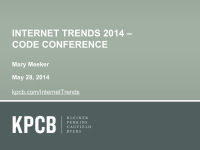
 Mary Meeker has a very checkered record as an analyst during the dot.com boom days, but her recent record as a forecaster and industry analyst is hard to challenge. Attendees at the Code conference, the reborn version of the D: All Things Digital conference, had Meeker present her forecast, and share it with the public at
Mary Meeker has a very checkered record as an analyst during the dot.com boom days, but her recent record as a forecaster and industry analyst is hard to challenge. Attendees at the Code conference, the reborn version of the D: All Things Digital conference, had Meeker present her forecast, and share it with the public at 
 The central core of Apple executives has mostly remained intact since Steve Jobs returned to the company in 1996. But Katie Cotton, senior vice president for worldwide communications, announced yesterday she is retiring after 18 years.
The central core of Apple executives has mostly remained intact since Steve Jobs returned to the company in 1996. But Katie Cotton, senior vice president for worldwide communications, announced yesterday she is retiring after 18 years.

 Even though the surgery won’t be until tomorrow afternoon, they have me all prepped. Those funky dots are some sort of MRI positioning indicators–I’m not sure what their precise function is, but they have to do with increasing the surgeons’ already incredible accuracy.
Even though the surgery won’t be until tomorrow afternoon, they have me all prepped. Those funky dots are some sort of MRI positioning indicators–I’m not sure what their precise function is, but they have to do with increasing the surgeons’ already incredible accuracy.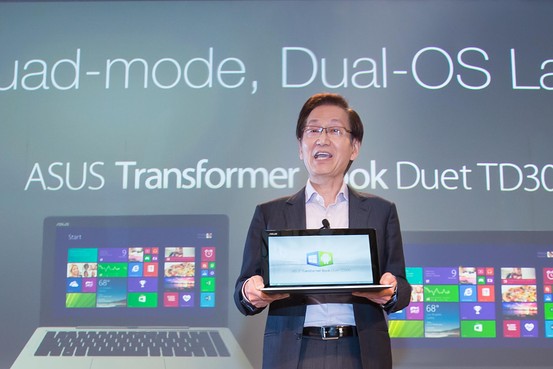



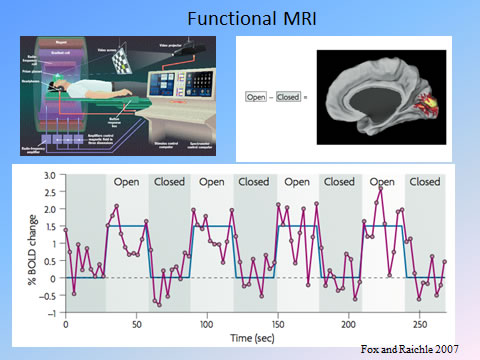

 It is not because the MR signal is directly sensitive to the neural activity. Instead, the MR signal change is an indirect effect related to the changes in blood flow that follow the changes in neural activity. The picture of what happens is somewhat subtle, and depends on two effects. The first effect is oxygen-rich blood and oxygen-poor blood have different magnetic properties related to the hemoglobin that binds oxygen in blood. This has a small effect on the MR signal, so if the blood is more oxygenated the signal is slightly stronger. The second effect relates to an unexpected physiological phenomenon. For reasons we still do not fully understand, neural activity triggers a much larger change in blood flow than in oxygen metabolism, and this leads to the blood being more oxygenated when neural activity increases. This somewhat paradoxical blood oxygenation level dependent (BOLD) effect is the basis for fMRI.
It is not because the MR signal is directly sensitive to the neural activity. Instead, the MR signal change is an indirect effect related to the changes in blood flow that follow the changes in neural activity. The picture of what happens is somewhat subtle, and depends on two effects. The first effect is oxygen-rich blood and oxygen-poor blood have different magnetic properties related to the hemoglobin that binds oxygen in blood. This has a small effect on the MR signal, so if the blood is more oxygenated the signal is slightly stronger. The second effect relates to an unexpected physiological phenomenon. For reasons we still do not fully understand, neural activity triggers a much larger change in blood flow than in oxygen metabolism, and this leads to the blood being more oxygenated when neural activity increases. This somewhat paradoxical blood oxygenation level dependent (BOLD) effect is the basis for fMRI.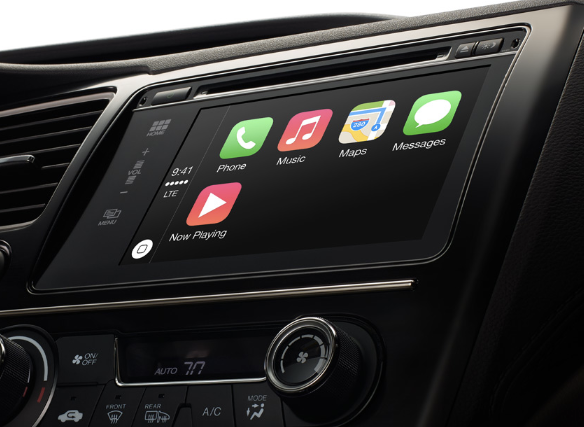


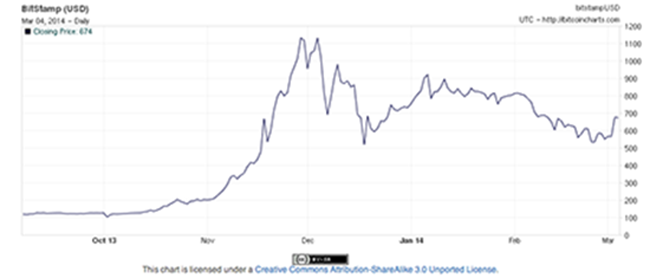
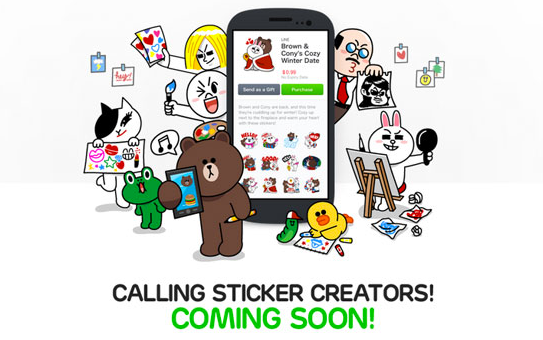








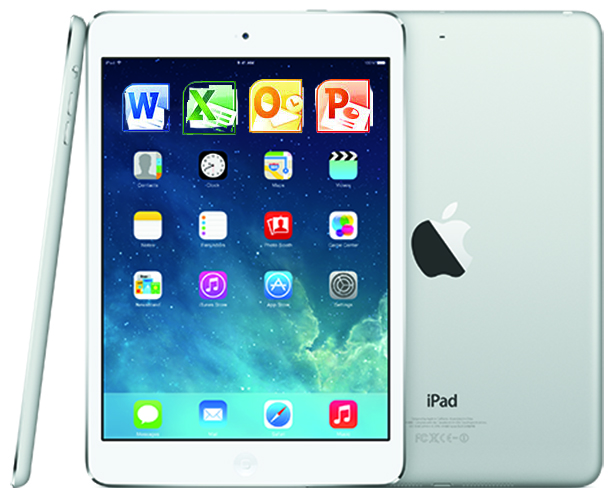

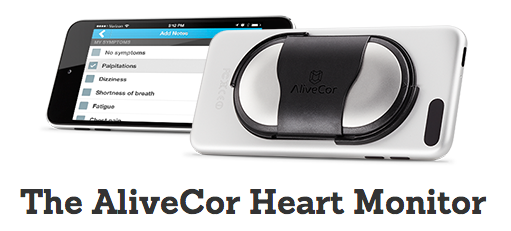


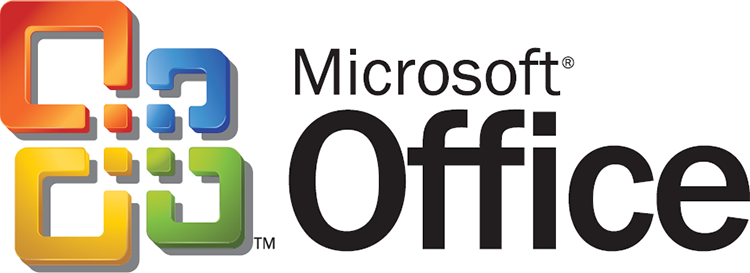

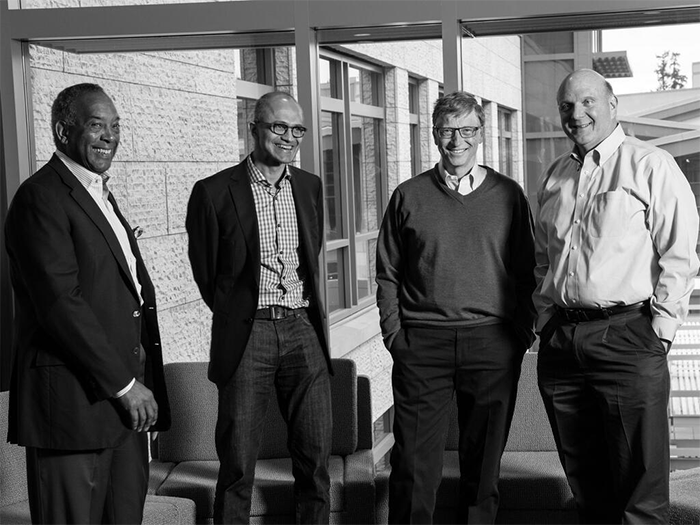

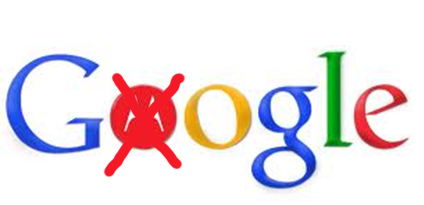

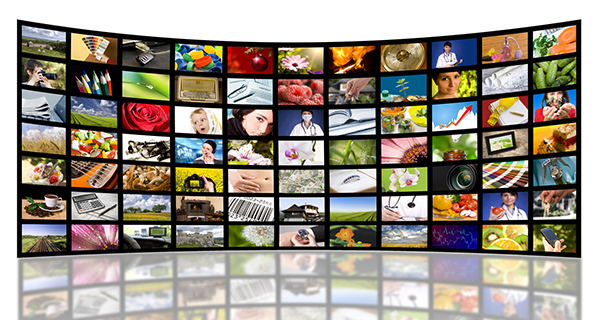

 The real issue in the case is that Aereo (and competitors using similar technology) do not pay broadcasters to retransmit over-the-air content. These rapidly growing fees, estimated at $3.3 billion this year by SNL Kagan, are negotiated between broadcasters and cable operators and have become a a major source of revenue to broadcasters.
The real issue in the case is that Aereo (and competitors using similar technology) do not pay broadcasters to retransmit over-the-air content. These rapidly growing fees, estimated at $3.3 billion this year by SNL Kagan, are negotiated between broadcasters and cable operators and have become a a major source of revenue to broadcasters.